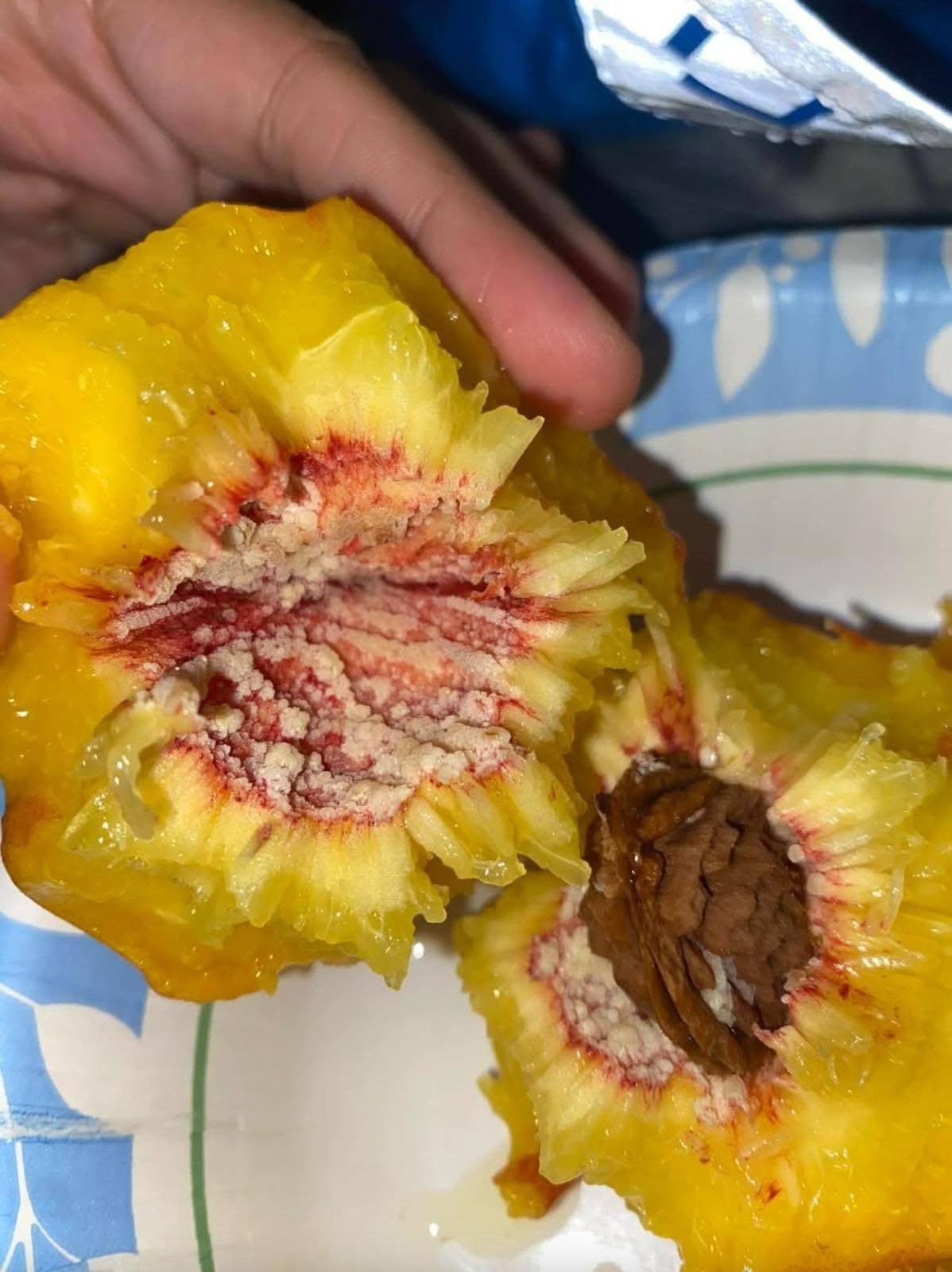You bite into a juicy, sun-ripened peach — sweet, fragrant, and delicious.
Then you crack open the pit… and pause.
Inside, nestled within the hard shell, is something unexpected:
A soft, white, cotton-like substance.
Your first thought?
“Is this mold? Is the peach bad? Did I just eat something dangerous?”
Take a breath.
What you’ve found is actually a normal part of the peach’s biology — not mold, not disease, and certainly not “undifferentiated cells” in the way some viral posts suggest.
Let’s explore what this mysterious white stuff really is — so you can enjoy your peaches with confidence, not concern.
Because real food wisdom isn’t about fear. It’s about understanding nature — seed by seed.
🔍 What Is That White Stuff Inside a Peach Pit?
When you break open a peach pit and find a soft, white, spongy or fibrous material inside, you’re looking at the developing seed embryo and surrounding endosperm tissue — the living core from which a new peach tree could grow under the right conditions.
Here’s how it works:
🌱 1. The Peach Pit Isn’t Just a Stone — It’s a Seed Container
- The hard outer shell (endocarp) protects the inner seed
- Inside, there’s a soft, almond-shaped kernel — similar in appearance to an almond
- This kernel contains the embryo (baby plant) surrounded by nutrient-rich tissue
✅ The white, fleshy-looking layer is living plant tissue, not mold or decay — especially in fresh, ripe peaches
🍄 2. Could It Be Mold?
Yes — but only if the fruit was damaged or stored too long.
📌 If the peach smelled off or tasted spoiled, discard it. But if the fruit was fresh and sweet, that white stuff is natural.
🐛 3. Insect Activity (Rare)
Sometimes small insects like borers lay eggs inside developing fruit. If larvae were present, you might see:
- Tiny holes in the pit
- Discolored or mushy tissue
- Presence of insect remnants
🪳 Very rare in store-bought peaches due to agricultural controls.
✅ Is It Safe to Eat?
Technically, the seed inside the pit is edible — but here’s what you need to know:
💡 Bottom line: Don’t eat the seed — enjoy the sweet flesh, and compost or dispose of the pit safely.
🧬 Fun Botanical Facts About Peach Pits
🌱 Nature designed the peach to reproduce — not just to taste amazing.
❌ Debunking the Myths
Final Thoughts
You don’t need to worry every time you find something strange inside a fruit.
That white stuff in your peach pit? It’s not broken. It’s not dangerous. It’s just nature doing its job — quietly growing life inside a shell.
So next time you’re enjoying a summer peach… crack the pit with curiosity, not fear.
Appreciate the design. Respect the seed. Eat the sweetness.
Because real wonder isn’t loud. It’s quiet. And sometimes, it hides in plain sight — inside a stone.
